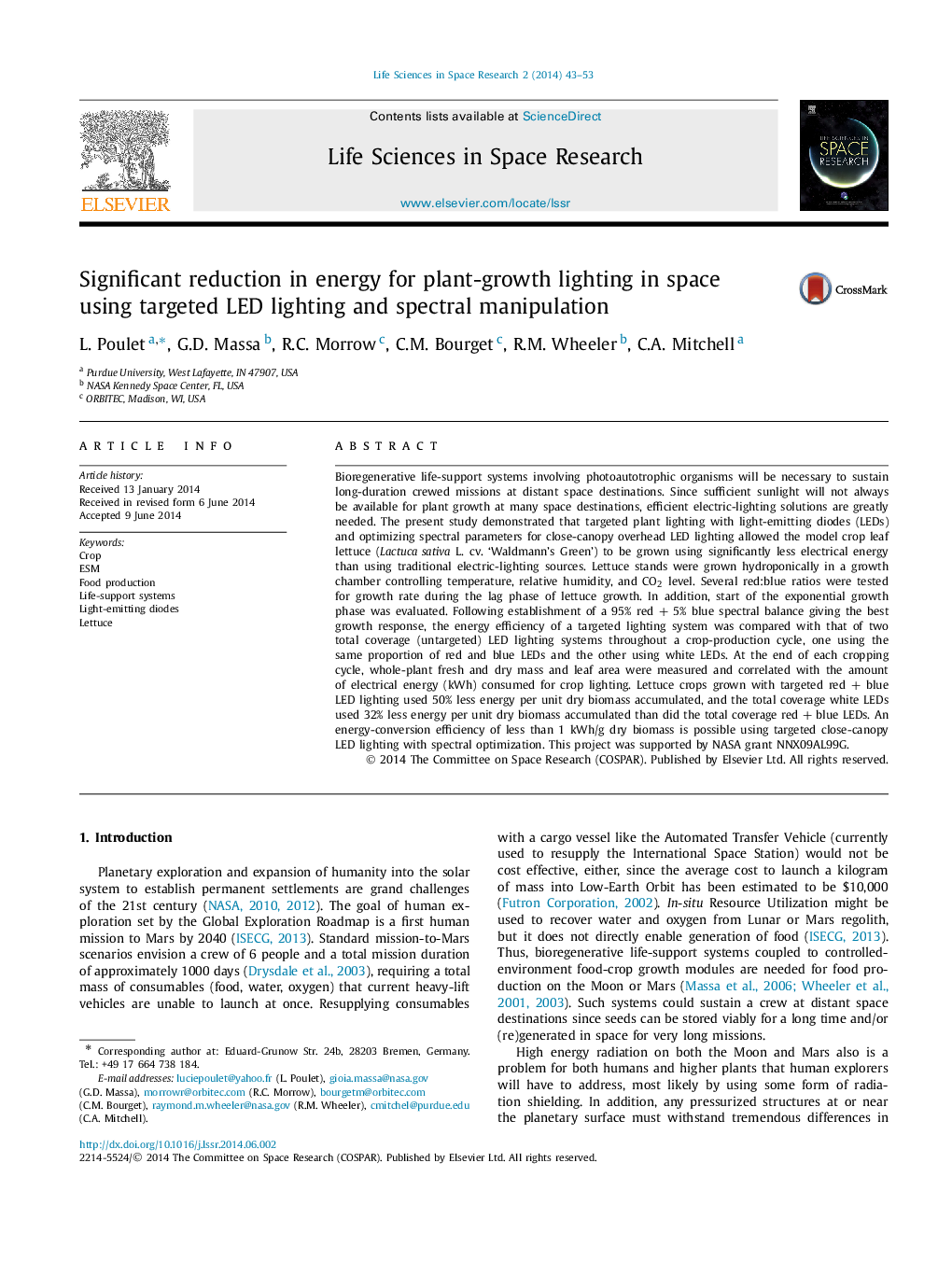| کد مقاله | کد نشریه | سال انتشار | مقاله انگلیسی | نسخه تمام متن |
|---|---|---|---|---|
| 8248116 | 1533322 | 2014 | 11 صفحه PDF | دانلود رایگان |
عنوان انگلیسی مقاله ISI
Significant reduction in energy for plant-growth lighting in space using targeted LED lighting and spectral manipulation
دانلود مقاله + سفارش ترجمه
دانلود مقاله ISI انگلیسی
رایگان برای ایرانیان
کلمات کلیدی
موضوعات مرتبط
مهندسی و علوم پایه
علوم زمین و سیارات
علوم فضا و نجوم
پیش نمایش صفحه اول مقاله

چکیده انگلیسی
Bioregenerative life-support systems involving photoautotrophic organisms will be necessary to sustain long-duration crewed missions at distant space destinations. Since sufficient sunlight will not always be available for plant growth at many space destinations, efficient electric-lighting solutions are greatly needed. The present study demonstrated that targeted plant lighting with light-emitting diodes (LEDs) and optimizing spectral parameters for close-canopy overhead LED lighting allowed the model crop leaf lettuce (Lactuca sativa L. cv. 'Waldmann's Green') to be grown using significantly less electrical energy than using traditional electric-lighting sources. Lettuce stands were grown hydroponically in a growth chamber controlling temperature, relative humidity, and CO2 level. Several red:blue ratios were tested for growth rate during the lag phase of lettuce growth. In addition, start of the exponential growth phase was evaluated. Following establishment of a 95% red + 5% blue spectral balance giving the best growth response, the energy efficiency of a targeted lighting system was compared with that of two total coverage (untargeted) LED lighting systems throughout a crop-production cycle, one using the same proportion of red and blue LEDs and the other using white LEDs. At the end of each cropping cycle, whole-plant fresh and dry mass and leaf area were measured and correlated with the amount of electrical energy (kWh) consumed for crop lighting. Lettuce crops grown with targeted red + blue LED lighting used 50% less energy per unit dry biomass accumulated, and the total coverage white LEDs used 32% less energy per unit dry biomass accumulated than did the total coverage red + blue LEDs. An energy-conversion efficiency of less than 1 kWh/g dry biomass is possible using targeted close-canopy LED lighting with spectral optimization. This project was supported by NASA grant NNX09AL99G.
ناشر
Database: Elsevier - ScienceDirect (ساینس دایرکت)
Journal: Life Sciences in Space Research - Volume 2, July 2014, Pages 43-53
Journal: Life Sciences in Space Research - Volume 2, July 2014, Pages 43-53
نویسندگان
L. Poulet, G.D. Massa, R.C. Morrow, C.M. Bourget, R.M. Wheeler, C.A. Mitchell,